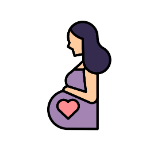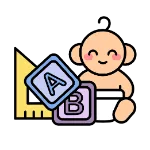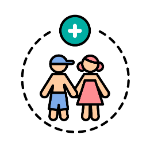
Parenting
Baby Crying Patterns: What Do They Mean?
8 min read | Updated on 06-10-2021 by HappyPreggie
Aside from sleeping and getting breastfed, crying is the most common state of being for a newborn. It is one of the few ways for a baby to express their feelings, at least until they can make up their own words or understand hand gestures.

Crying is a baby’s way of telling the parents what they need. They cry because of many things such as hunger, tiredness, discomfort, pain, and even boredom. While these cries may sound the same at times, they are actually different if parents listen to them carefully.

High pitched, and usually sounds fairly desperate, this crying is often combined with motions such as sucking their fingers, lip-smacking, and hands wiggling in the air when they see their mothers. Other clues include the last time they had their milk. If it is around one and a half or three hours earlier, then it is a lot more likely that they are just hungry.

Breathy and whiny. This crying is normally easier to soothe as it is not continuous. During this time, the baby usually yawns and tugs at their ears a lot while their eyes will be closed. However, if they are open, they will appear glassy with redness or puffiness underneath them due to constant rubbing. This is a signal that the baby is feeling tired or restless and has had enough of moving around at that moment.

Usually not as loud as other cries and often accompanied with short breaks. In this case, it can be translated into two types of expressions; boredom and excitement. Parents can easily detect if the baby is bored by cheering them up. If they suddenly stop crying and starts laughing, then that is boredom. On the other hand, excitement can be seen if the baby starts shrieking and keeps turning its head around.

Forced and whiny with a pattern of short repetitions, like the sound, "uh-UH, uh-UH." This cry can be accompanied by frequent scrunching of their cheeks and hands batting around in the air. For other clues, parents can try checking around for factors that may be the source of the discomfort. Many circumstances include wet or heavy diapers and room surroundings that are too cold or too hot.

Loud, intense wailing and screaming. In most cases, the baby may thrash around and arches their back a lot while gas pains like stomachaches will make them bring their knees forward to their chest and begin letting out slow grunts. These fidgeting movements tell parents to find out what kind of pain is the baby experiencing and immediately seek medical help for serious injuries.
Continuous baby cries can trigger panic and stress in many households. The daily non-stop crying may not cause that much of an effect on the babies, but it certainly can leave its impact on the parents. Listening to the wails and screams can be upsetting and anxiety-inducing especially when you barely get enough time to rest because of work and other responsibilities. Hence, learning how to cope with these cries is very important.

Research shows that normal babies tend to cry and fuss for almost three hours a day on average. Most of this crying and fussing also normally happens in the late afternoon and evening. However, it may differ every day depending on the baby’s mood. Nonetheless, it is very important to respond to your baby's cries as you never know what the reason might be. It is best to be alert and attentive to your surroundings at home so that you will be able to tend to them as soon as possible. When you have finally learned to understand your baby’s needs, a stronger bond will eventually be fostered between you and your little one.
Want to read more? Check out these simple steps to handle upset toddlers and how to learn baby sign language to communicate with your little ones.
(Image credits to AsianScientistMagazine)
Crying is a baby’s way of telling the parents what they need. They cry because of many things such as hunger, tiredness, discomfort, pain, and even boredom. While these cries may sound the same at times, they are actually different if parents listen to them carefully.
Baby Crying Patterns
#1 Hunger
(Image credits to HappyFamilyOrganics)
High pitched, and usually sounds fairly desperate, this crying is often combined with motions such as sucking their fingers, lip-smacking, and hands wiggling in the air when they see their mothers. Other clues include the last time they had their milk. If it is around one and a half or three hours earlier, then it is a lot more likely that they are just hungry.
#2 Tiredness
(Image credits to AsiaOne)
Breathy and whiny. This crying is normally easier to soothe as it is not continuous. During this time, the baby usually yawns and tugs at their ears a lot while their eyes will be closed. However, if they are open, they will appear glassy with redness or puffiness underneath them due to constant rubbing. This is a signal that the baby is feeling tired or restless and has had enough of moving around at that moment.
#3 Boredom or Excitement
(Image credits to RawPixel)
Usually not as loud as other cries and often accompanied with short breaks. In this case, it can be translated into two types of expressions; boredom and excitement. Parents can easily detect if the baby is bored by cheering them up. If they suddenly stop crying and starts laughing, then that is boredom. On the other hand, excitement can be seen if the baby starts shrieking and keeps turning its head around.
#4 Discomfort
(Image credits to Depositphotos)
Forced and whiny with a pattern of short repetitions, like the sound, "uh-UH, uh-UH." This cry can be accompanied by frequent scrunching of their cheeks and hands batting around in the air. For other clues, parents can try checking around for factors that may be the source of the discomfort. Many circumstances include wet or heavy diapers and room surroundings that are too cold or too hot.
#5 Pain
(Image credits to VerywellFamily)
Loud, intense wailing and screaming. In most cases, the baby may thrash around and arches their back a lot while gas pains like stomachaches will make them bring their knees forward to their chest and begin letting out slow grunts. These fidgeting movements tell parents to find out what kind of pain is the baby experiencing and immediately seek medical help for serious injuries.
Dealing With The Pressure
Continuous baby cries can trigger panic and stress in many households. The daily non-stop crying may not cause that much of an effect on the babies, but it certainly can leave its impact on the parents. Listening to the wails and screams can be upsetting and anxiety-inducing especially when you barely get enough time to rest because of work and other responsibilities. Hence, learning how to cope with these cries is very important.
(Image credits to TheAsianParent)
- Take a deep breath: Remember that the crying will not last forever.
- Find time to rest: Arrange shifts with your partner so that each parent can get some needed break every day.
- Stay healthy: Do not miss your meals, always make time for exercise and sleep when you can.
- Know your limits: If the crying is getting too much for you, set your baby down in a safe place and get into a quiet room to calm yourself down for a while.
Research shows that normal babies tend to cry and fuss for almost three hours a day on average. Most of this crying and fussing also normally happens in the late afternoon and evening. However, it may differ every day depending on the baby’s mood. Nonetheless, it is very important to respond to your baby's cries as you never know what the reason might be. It is best to be alert and attentive to your surroundings at home so that you will be able to tend to them as soon as possible. When you have finally learned to understand your baby’s needs, a stronger bond will eventually be fostered between you and your little one.
Want to read more? Check out these simple steps to handle upset toddlers and how to learn baby sign language to communicate with your little ones.
Join the largest support network for family health and well-being. Ready to get started?
Get started
















